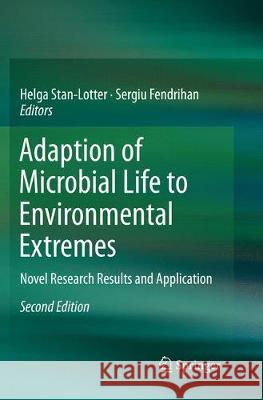Adaption of Microbial Life to Environmental Extremes: Novel Research Results and Application » książka
topmenu
Adaption of Microbial Life to Environmental Extremes: Novel Research Results and Application
ISBN-13: 9783319839141 / Angielski / Miękka / 2018 / 342 str.
Kategorie:
Kategorie BISAC:
Wydawca:
Springer
Język:
Angielski
ISBN-13:
9783319839141
Rok wydania:
2018
Wydanie:
Softcover Repri
Ilość stron:
342
Oprawa:
Miękka
Wolumenów:
01











